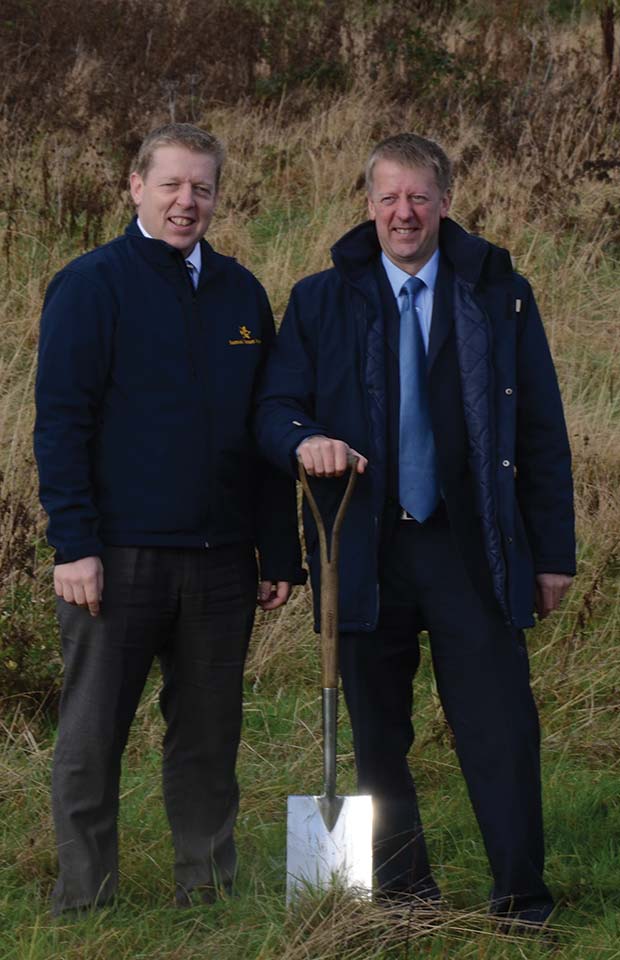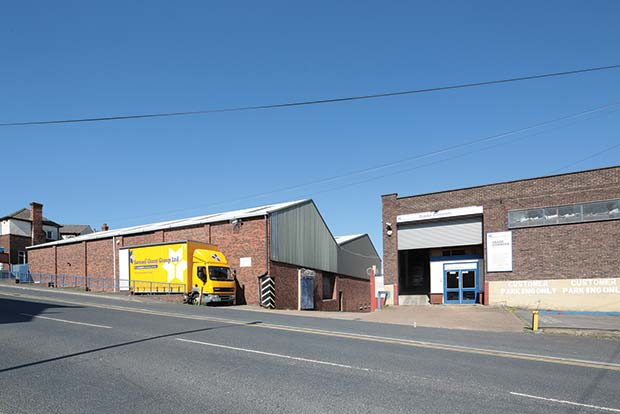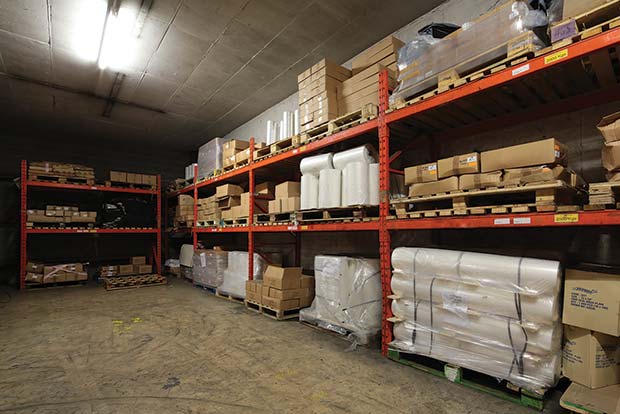Leeds-based Samuel Grant Group celebrate 125 years of business in 2016. So much has changed since the Great-Grandfather of the current Managing Directors, Samuel Grant himself, started the business in 1891. The company provides an unrivalled packaging service, offering expert consultancy in every area of their field.
 Since then the business has progressed from loading goods direct from the Leeds canalside, through a variety of premises, before eventually staying at their current site, where they have been situated for the last 65 years.
Since then the business has progressed from loading goods direct from the Leeds canalside, through a variety of premises, before eventually staying at their current site, where they have been situated for the last 65 years.
With warehouse requirements changing, more space being needed to accommodate their continued growth, and with more and more of their clients wanting their goods stored until they are required, a new solution was needed.
The Samuel Grant team secured funding and planning approval to build a bespoke 50,000 square foot warehousing facility within the Leeds City Enterprise Zone at Thornes Farm, and work started early in January 2015, with the company planning to move there in August 2015. The bespoke facility will create a 50 per cent expansion of the company’s warehousing capacity, resulting in increased efficiency, as well as generating new jobs and developing the skillset of the current staff.
The new site will see the company investing heavily in continued growth and innovation, with a strong emphasis on improving their environmental impact. Staff will benefit from improved working conditions which will further support the company ethos of being a great place to work. Samuel Grant takes pride in excellent customer service – the move is being carefully planned to ensure that the highest customer service standards are maintained throughout, and the larger premises will also allow the company to offer a greater range of products.
We caught up with Andrew Grant, Managing Director, to gather his thoughts on the process:
Where do you start with building a new facility of this size?
The first thing we had to do was find an appropriate location. Extensive research into appropriate sites was done by Knight Frank, who worked with the Leeds City Region Enterprise Partnership (LEP). We enlisted the help of a legal team from Shulmans, and finance from RBS thanks to advice from Garbutt and Elliott. The site was made available for development by Marshalls, and is being developed by Marshall’s CDP. All of these ducks had to be in a row before we could even cut the turf!

What are the main priorities for the new warehouse?
The new site has to offer unrivalled efficiency, both for our staff and our clients. It has to completely comply with the British Retail Consortium (BRC)’s Institute of Packaging standards, making it all suitable for storing packaging that will be used for food. The warehouse needs to be value for money, and so no space should be wasted unnecessarily. The site needs to be safe, flexible and efficient.
What are the main challenges being faced?
The main challenge for the build was to efficiently store the maximum amount of packaging in the minimum amount of space. Our packaging comes from all over the world in multiple formats including non-palletised shipping containers that require level dock unloading.
Our deliveries range from the heavy weight (ie palletised polythene, tools and steel strapping), to fragile loads, to light but cumbersome loads (ie bubble wrap), and the most awkward of loads, like non-standard pallets of corrugated boxes and industrial machinery (ie our own Samson Nano pallet-wrap system). The new facility needs to be able to deal with delivery and despatch all of these quickly and efficiently.
How have you maximised on the amount of space in the warehouse?
Our warehouse is about twice the height of our existing operation, with significantly narrower aisles. By working with our partners Linde and WSSL (see inserts), we have managed to ensure that all the space is utilised efficiently, whilst also still being flexible. By making the warehouse taller, we have increased the amount of storage per square foot of ground space, meaning we pay less business rates for more useable storage space. We can pass this financial efficiency onto our clients, meaning their cost of storing pallets at Samuel Grant’s is as low as possible.

How is the warehouse more efficient?
Our racking and storage enables us to have flexible pallet storage – we will be able to store pallets up to 2m wide x 3m deep. Not only will we be able to store tall and skinny pallets, but also wide, bulky, awkward cumbersome ones – and we see a lot of those! Our new loading bay has two dock levellers enabling wagons to reverse straight onto the dock.
How will the move to the site benefit your customers?
Samuel Grant’s will now be able to store more packaging for our customers, meaning that they can free their own warehouses for storage other than their packaging. This will allow Samuel Grant’s to enable our customers’ expansion, which has a knock on effect to the amount of business they will be able to do with us (see Bagel Nash case study). Our customers will be able to store all their packaging at Grant’s until the very moment it is needed, and our improved efficiency and logistics, including operating our own fleet of vehicles, will enable us to deliver their requirements usually the same day.
The entire warehouse will comply with BRC/IOP standards for cleanliness, making it easier for us to service and reassure our food industry customers.
Our improved Microsoft Dynamics will allow more efficient stock control and monitoring, meaning we will know a long time in advance of our customers if more of their requirements need to be ordered / delivered.
Will your staff require much additional support to work within the new warehouse?
Of course they will need to be trained on the new machinery and racking, but our staff’s safety has been at the forefront of all decisions. Our state of the art racking works in conjunction with our new Linde trucks – the trucks are fitted with special sensors for VNA (very narrow aisle) operation, and feature kill switches for safety.




Comments are closed.